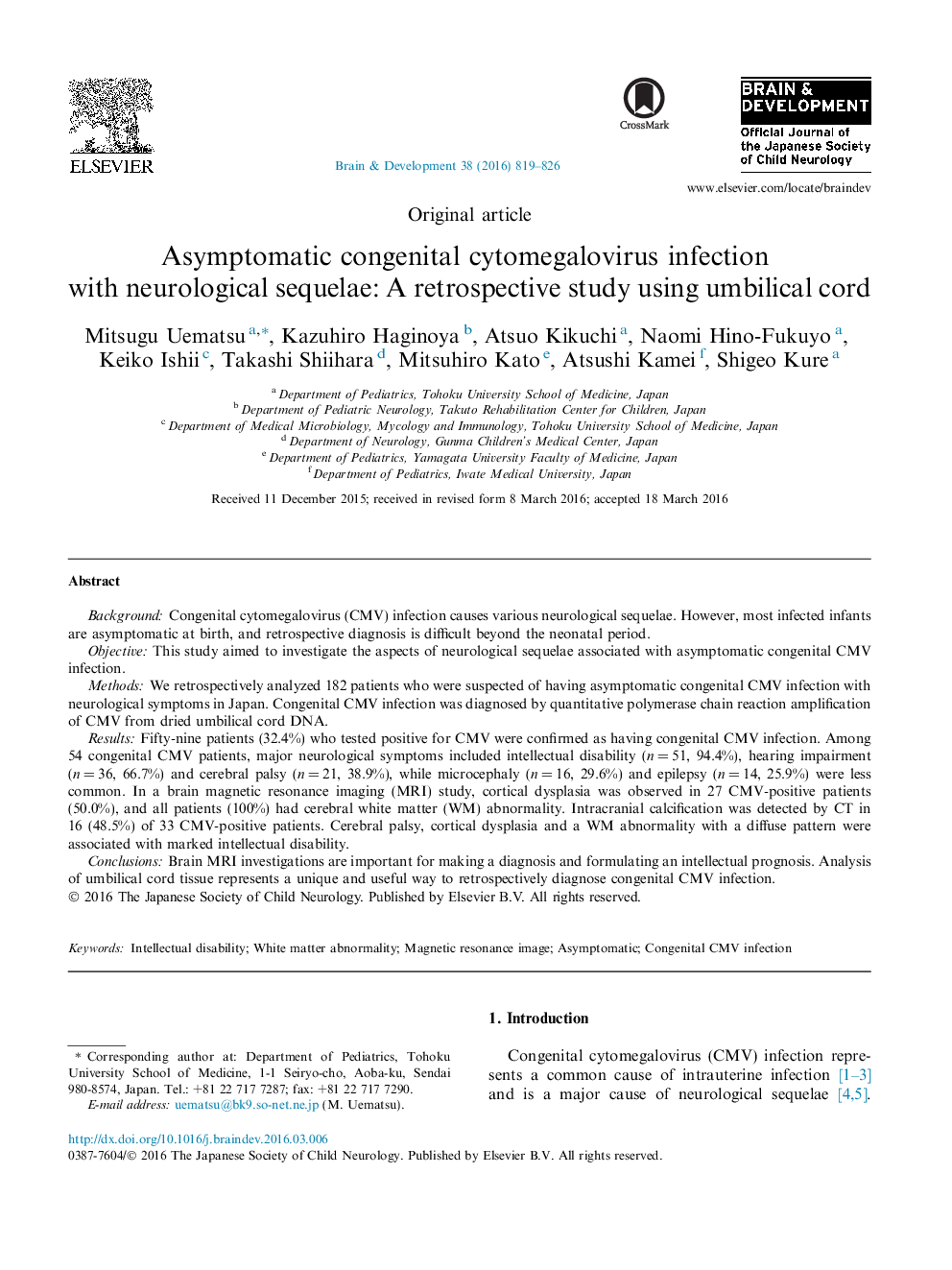| Article ID | Journal | Published Year | Pages | File Type |
|---|---|---|---|---|
| 3036425 | Brain and Development | 2016 | 8 Pages |
BackgroundCongenital cytomegalovirus (CMV) infection causes various neurological sequelae. However, most infected infants are asymptomatic at birth, and retrospective diagnosis is difficult beyond the neonatal period.ObjectiveThis study aimed to investigate the aspects of neurological sequelae associated with asymptomatic congenital CMV infection.MethodsWe retrospectively analyzed 182 patients who were suspected of having asymptomatic congenital CMV infection with neurological symptoms in Japan. Congenital CMV infection was diagnosed by quantitative polymerase chain reaction amplification of CMV from dried umbilical cord DNA.ResultsFifty-nine patients (32.4%) who tested positive for CMV were confirmed as having congenital CMV infection. Among 54 congenital CMV patients, major neurological symptoms included intellectual disability (n = 51, 94.4%), hearing impairment (n = 36, 66.7%) and cerebral palsy (n = 21, 38.9%), while microcephaly (n = 16, 29.6%) and epilepsy (n = 14, 25.9%) were less common. In a brain magnetic resonance imaging (MRI) study, cortical dysplasia was observed in 27 CMV-positive patients (50.0%), and all patients (100%) had cerebral white matter (WM) abnormality. Intracranial calcification was detected by CT in 16 (48.5%) of 33 CMV-positive patients. Cerebral palsy, cortical dysplasia and a WM abnormality with a diffuse pattern were associated with marked intellectual disability.ConclusionsBrain MRI investigations are important for making a diagnosis and formulating an intellectual prognosis. Analysis of umbilical cord tissue represents a unique and useful way to retrospectively diagnose congenital CMV infection.
